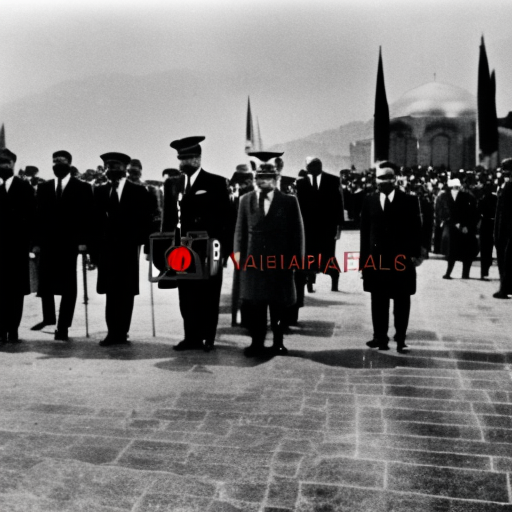Summary:
The death and state funeral of Mustafa Kemal Atatürk marked the end of an era in Turkish history. Atatürk, the founder and first President of the Republic of Turkey, passed away on November 10, 1938, after a period of declining health. His death was mourned by the nation, and his state funeral became a significant event that showcased the deep respect and admiration the Turkish people had for their leader.
Background:
Mustafa Kemal Atatürk was a prominent military leader who played a crucial role in the Turkish War of Independence and the subsequent establishment of the Republic of Turkey in 1923. As the country’s first President, Atatürk implemented a series of sweeping reforms aimed at modernizing Turkey and transforming it into a secular and Westernized nation. His leadership and vision earned him immense popularity and respect among the Turkish population.
Death:
Atatürk’s health had been deteriorating for several years before his death. He had been suffering from cirrhosis of the liver, a condition exacerbated by his heavy drinking. On the morning of November 10, 1938, Atatürk passed away at the Dolmabahçe Palace in Istanbul at the age of 57. The news of his death spread rapidly throughout the country, plunging the nation into mourning.
State Funeral:
The state funeral of Mustafa Kemal Atatürk was a meticulously planned event that aimed to honor his memory and pay tribute to his contributions to the nation. The funeral procession began at the Dolmabahçe Palace, where Atatürk’s body lay in state. Thousands of mourners gathered outside the palace, waiting to catch a glimpse of their beloved leader for the last time.
The procession moved through the streets of Istanbul, with military units, government officials, and foreign dignitaries joining in the somber march. The Turkish people lined the streets, weeping and paying their respects as the funeral cortege passed by. The atmosphere was one of deep sorrow and reverence.
The funeral procession eventually reached the Ethnography Museum in Ankara, where Atatürk’s body was to be interred. The museum had been transformed into a temporary mausoleum, adorned with flowers and wreaths. A state ceremony was held, attended by high-ranking officials and foreign ambassadors, who delivered eulogies praising Atatürk’s leadership and legacy.
Atatürk’s body was then placed in a sarcophagus inside the newly constructed Anıtkabir, a monumental mausoleum that would become his final resting place. The construction of Anıtkabir was a massive undertaking, reflecting the significance of Atatürk’s role in Turkish history. It stands as a symbol of his enduring legacy and is now a revered national monument.
Legacy:
The death and state funeral of Mustafa Kemal Atatürk marked the end of an era in Turkish history. Atatürk’s legacy as the founder of modern Turkey and his contributions to the nation’s development continue to be celebrated and revered. His state funeral was a testament to the deep respect and admiration the Turkish people had for their leader, and his memory lives on as an integral part of Turkey’s national identity.












